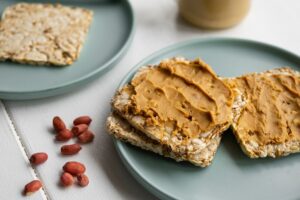Our furry companions deserve all the love and treats in the world, but sometimes those store-bought goodies can pack a hidden punch of calories. If your pup is on a weight management journey, fear not! You can still spoil them with delicious, homemade treats that are vet-approved and low in calories.
This blog post offers a variety of recipes that are not only kind to your dog’s waistline but also bursting with flavor and nutrients. Remember, consult your veterinarian before introducing any new food to your dog’s diet, especially if they have any underlying health conditions.
Why Low-Calorie Dog Treats Matter
Obesity is a growing concern among dogs, leading to health problems like joint pain, diabetes, and respiratory issues. Just like humans, shedding excess weight can significantly improve a dog’s overall health and well-being.
Here’s where low-calorie treats come in:
- Portion Control: These treats allow you to offer more frequent rewards without exceeding your dog’s daily calorie intake.
- Healthier Ingredients: Homemade treats often use fresh, whole ingredients that provide essential vitamins and minerals while being lower in fat and sugar.
- Bonding Time: Making treats with your dog can be a fun and rewarding experience that strengthens your bond.
Tips for Making Low-Calorie Dog Treats
Before we dive into the recipes, here are some helpful tips for success:
- Quality Ingredients: Choose fresh, whole foods whenever possible. Avoid processed ingredients with added sugars and unhealthy fats.
- Portion Size Matters: Even low-calorie treats should be offered in moderation. A good rule of thumb is to keep treats to no more than 10% of your dog’s daily calorie intake.
- Substitute Wisely: You can often swap high-calorie ingredients for lower-calorie alternatives. For example, use mashed banana or pumpkin puree instead of sugary peanut butter.
- Get Creative!: Don’t be afraid to experiment with different flavors and ingredients. There’s a whole world of healthy, low-calorie options to explore!
7 Vet-Approved Low-Calorie Dog Treat Recipes
Now, let’s get baking (or freezing!) with these delicious and nutritious recipes:
1. Frozen Apple and Pumpkin Popsicles

These refreshing popsicles are perfect for a hot summer day.
Ingredients
- 1 cup unsweetened applesauce
- 1 cup canned pumpkin puree
- 1/2 cup water
- Silicone popsicle molds
Instructions
- Combine applesauce, pumpkin puree, and water in a bowl and mix well.
- Pour the mixture into silicone popsicle molds.
- Freeze for at least 4 hours, or until solid.
2. Sweet Potato and Carrot Chews
These crunchy treats are packed with beta-carotene and fiber, keeping your dog satisfied.
Ingredients
- 1 cup mashed sweet potato
- 1 cup grated carrots
- 1/2 cup rolled oats
Instructions
- Preheat oven to 350°F (175°C).
- Line a baking sheet with parchment paper.
- In a large bowl, combine mashed sweet potato, grated carrots, and rolled oats. Mix well.
- Form the mixture into small bite-sized pieces and place them on the baking sheet.
- Bake for 15-20 minutes, or until firm and slightly browned.
- Let cool completely before serving.
3. Banana Oatmeal Bites
These protein-packed bites are a great source of energy for your active pup.
Ingredients
- 1 ripe banana, mashed
- 1 cup rolled oats
- 1/4 cup unsweetened applesauce
Instructions
- Preheat oven to 350°F (175°C).
- Line a baking sheet with parchment paper.
- In a large bowl, combine mashed banana, rolled oats, and applesauce. Mix well.
- Form the mixture into small bite-sized pieces and place them on the baking sheet.
- Bake for 15-20 minutes, or until firm and slightly browned.
- Let cool completely before serving.
4. Dehydrated Sweet Potato Fries
These crunchy treats are a healthier alternative to store-bought potato chips and satisfy your dog’s craving for something to chew on.
Ingredients
- 2 large sweet potatoes
Instructions
- Preheat oven to its lowest setting (around 150°F or 65°C).
- Wash and thinly slice the sweet potatoes (around ¼ inch thick).
- Line baking sheets with parchment paper and arrange the sweet potato slices in a single layer, making sure they don’t touch.
- Bake for 3-4 hours, or until the sweet potatoes are completely dehydrated and crisp. They should be brittle and snap easily when broken.
- Let cool completely before serving.
5. Pumpkin and Cottage Cheese Bites

These protein-rich bites are a great source of calcium and probiotics for your dog’s gut health.
Ingredients
- 1 cup canned pumpkin puree
- 1 cup low-fat cottage cheese
- 1/2 cup rolled oats
Instructions
- In a large bowl, combine pumpkin puree, cottage cheese, and rolled oats. Mix well.
- Form the mixture into small bite-sized pieces and place them on a lined baking sheet.
- Alternatively, you can use a cookie cutter to create fun shapes!
- Freeze for at least 2 hours, or until solid.
6. Salmon and Brown Rice Treats
These omega-3-rich treats are perfect for dogs with skin and coat problems.
Ingredients
- 1 cup cooked brown rice
- 1 cup cooked, flaked salmon
- 1/2 cup mashed banana
Instructions
- Preheat oven to 350°F (175°C).
- Line a baking sheet with parchment paper.
- In a large bowl, combine cooked brown rice, flaked salmon, and mashed banana. Mix well.
- Form the mixture into small bite-sized pieces and place them on the baking sheet.
- Bake for 15-20 minutes, or until firm and slightly browned.
- Let cool completely before serving.
7. Frozen Watermelon Mint Popsicles
These refreshing popsicles are perfect for a hot summer day and provide some hydration for your pup.
Ingredients
- 2 cups seedless watermelon, chopped
- 1/4 cup fresh mint leaves, chopped
- 1/2 cup water
- Silicone popsicle molds
Instructions
- In a blender, combine chopped watermelon, mint leaves, and water. Blend until smooth.
- Pour the mixture into silicone popsicle molds.
- Freeze for at least 4 hours, or until solid.
Conclusion
Remember, these are just a few ideas to get you started. With a little creativity, you can create countless healthy and delicious low-calorie treats for your furry friend. Most importantly, enjoy the bonding experience of making these treats together and showering your pup with love (and healthy snacks!)
Final Notes
- Always consult your veterinarian before introducing any new food to your dog’s diet, especially if they have any underlying health conditions.
- Store homemade treats in an airtight container in the refrigerator for up to a week, or freeze for longer storage.
- Consider your dog’s size and adjust the recipe accordingly. Smaller dogs will need smaller treat portions.
Be sure to supervise your dog when they enjoy their homemade treats, and happy baking! At Truffle Paws, we’re here to simplify this process for you. Our goal is to select the best insurance plan for your dog that keeps your dog healthy and ensures you’re ready for the financial responsibilities. Let’s connect today and protect your dog.







